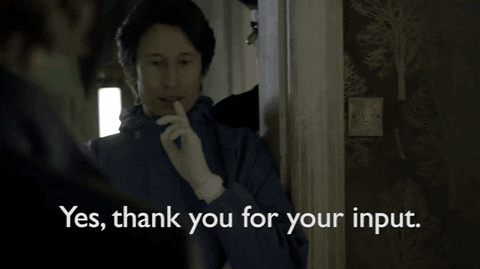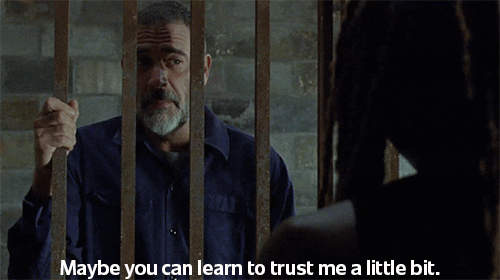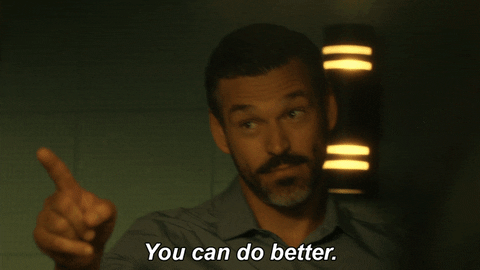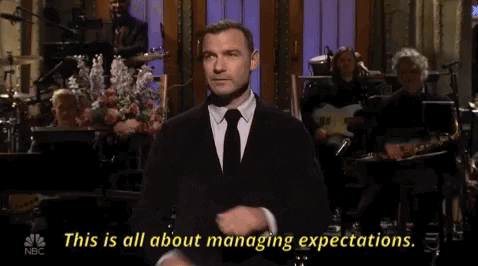For every outstanding student employee who shows promise of becoming a future SA Pro, you’ll likely supervise at least one who’ll test your passion for student development.
They’ll push your patience and leave you questioning where it all went wrong. But, as difficult as these students can be, the reward of a behavioral or attitudinal breakthrough is probably enough to keep you working toward a solution.
I’m going to outline seven types of difficult student employees and equip you with techniques on how to manage them. If you find yourself lost on how to coach these seemingly impossible staff members, I hope this list will help to find a way forward.
7 Types
1. The Empathy Drainer
My master’s degree is in counselor education, so trust me when I say that I absolutely signed up to be a healer and a helper. At the start of every student one-on-one, I ask how they’re doing and spend time seeking to understand the current state of their worlds. This is a great practice for productive student staff check-in.
However, when you format your meetings this way, you’ll inevitably get some students who see it as an opportunity for you to counsel them. While there is nothing wrong with using one-on-one time for personal development every so often, making it a habit is when it starts to interfere with job productivity… and your mental health.
If you have a student who consistently comes to you complaining of obstacles and sparking heavy conversations, make some space for those talks but also be sure that you are redirecting them to the appropriate resources.
Although most SA pros are not licensed therapists, we want our students to get the prescribed help they need. Offer to walk a student in distress over to the counseling center after your meeting or task them with creating a resource sheet they can bring to your next one-on-one. You might also consider developing a self-care plan together and allocating a specific amount of time each meeting to review their progress.
2. The Not-So Constructive Criticizer
Receiving feedback from students isn’t all that fun. But it can make you a stronger supervisor and better all-around professional — especially when the critiques include actionable steps toward improvement.

Unfortunately, not every student understands the importance of a complete feedback loop. So, you might end up hearing about all the things you’re supposedly doing wrong without any tangible evidence nor a collaborative solution. This is not only deflating to your professional ego, but it can also lead to disengagement and resentment toward the student who is offering the unsolicited feedback.
In order to make productive progress as a result of feedback, be sure to allow for student critiques during evaluation seasons. In other words, students shouldn’t only be giving the feedback casually; they should complete an evaluation form too.
The format of the evaluation could be as simple as a chart with one column dedicated to feedback, another dedicated to rationale, and another dedicated to solutions. Have the student present their completed feedback to you during a dedicated one-on-one meeting. Be sure to ask questions for clarification, should you have them.
Now, if your student is just a negative nay-sayer who gives their opinion regardless of its bearing on your professional capacity, you may need a different approach. For example, I once had a staff member who told me that I sounded stupid when I was speaking (yes, that’s a true story and it’s still painful to share it to this day).
Considering the fact that the rest of my staff didn’t feel the same way, I determined that it didn’t need addressing across the board. Rather, I needed to work with the student on his preferred communication style so that he would be more receptive to my leadership. Sometimes, the feedback has less to do with you and more with the person giving it.
3. The Doubter
Do these statements sound familiar?: “That’ll never work.” “We can’t make that happen.” “Why would we attempt that if we know we’ll fail?” If so, you’ve got a doubter on your hands.
This is the student staff member who wants hard data to back up every idea and initiative you propose. They’re not ones to throw caution to the wind, which can be stifling and frustrating for a team that’s trying to be innovative and put ideas into action.
So, how do you work with someone who’s incredibly black and white when you want your team to live in vibrant color? You take baby steps!
Start by being cautiously creative. Clearly articulate the benefits of risk-taking while subduing the student’s hesitancies toward trying something new. You might even try to present the idea to them before you share it with the rest of your staff so that they’ll have time to process it. They can also use that prep time to conduct some initial research so that idea will be a bit more calculated to their terms.
Once they start to see the success that can come from ingenuity, they may be inclined to trust the process.

4. The Morale Crusher
Imagine: Your team is excited for the upcoming hiring process. They can’t wait to interview and onboard new staff members. They’re talking about the team-builders they’ll do and the staff development activities they’ll participate in. This kind of energy is contagious and you know it bodes well for team dynamics.
….That is, until The Morale Crusher comes along and tells the team how unfortunate the candidate pool is. They shoot down the team-builder ideas and are totally put off by the idea of having to spend time bonding with the staff when they could be studying.
All it takes is one staff member like this to slow the momentum.
In order to ensure that they don’t derail the train, coach them on how to read a room. There are times when it’s helpful to be a realist and oppose the majority opinion; differences in opinion often make your team stronger. However, when pessimism gets in the way of an otherwise joyful time, it may be time for an attitude check.
Another tactic is to determine what boosts this team member’s morale. What gets them excited? What are they most passionate about? See if there are ways to infuse their interests into the team’s vision so that they’ll feel bought into the action.
For example, maybe they’re feeling discouraged by the applicant pool but they have naturally great mentorship skills. You could get them excited about training new staff members by highlighting the potential candidates have to thrive in the role.
5. The Bare Minimizer
This staff member is usually overcommitted or generally dispassionate about the role. They’re the ones that get the job done by the skin of their teeth. These students are hard to supervise because you can’t expect them to go beyond the position description. Still, you’d love for them to try.
For example, a student who is tasked with putting up a bulletin board once a month might reliably do so, but only by recycling bulletin board concepts from last semester and printing the information in black and white. Technically, they’ve met the requirement, but they really haven’t given the project their best effort.
What’s worse, that apathy can often trickle down to other staff members who may then start to minimize their own efforts.
This is a tricky situation to navigate because, on the one hand, it’s important to acknowledge that students have competing priorities and passions. However, you also have to articulate that their bare minimum may not be your bare minimum.

This is where setting expectations becomes increasingly important. You’ll want to clearly communicate what you hope to see regarding each of their responsibilities — for example, that bulletin boards must be unique from month to month and include colorful elements and informative takeaways.
Do this with each aspect of their role and work on holding them accountable as they strive to meet expectations. And don’t forget to celebrate their wins along the way! You can do so by rewarding exemplary efforts or acknowledging their appreciation language.
6. The Tradition Protector
Every time I’ve started a new role, I’ve faced the same challenge: The it’s-always-been-done-this-way challenge.
Students are often averse to change. They appreciate tradition and struggle to break free from it. And while there’s a time and a place for things to stay the same, I bet you’ll agree there are also opportunities for doing things in new and improved ways.
There are a couple of tactics for supervising a student with a stubborn hold on tradition. For one, you can adapt a tradition to include new components. When you propose the new elements, show the students how it’ll make their jobs easier as a result. This is a win-win for both parties.
Alternatively, you could play a “keep, change, stop” game wherein the team collectively decides what stays, what could use a refresh, and what can be eliminated altogether. This approach is helpful because you can guide students toward change while granting them some autonomy to get there on their own.
Another tactic involves presenting them with a challenge. For example, if you have a staff member who will not part with traditional programs they’ve hosted, allow them to keep some of the ones they’re most attached to. But for every tradition they keep, they have to brainstorm and implement a new initiative so that the breakdown of programs ends up being 50% old, 50% new.
7. The One-Liner
No matter how many emails, GroupMes, or Slack messages you send, this student will only read the first sentence. This leads to missed deadlines, misinformation, and a gap in communication. This can feel incredibly frustrating for a supervisor who is doing their best to communicate in order to maintain a smooth operation.
When working with this type of student, consider diversifying your methods of communication. If it’s urgent, make it a phone call. If it can wait, leave it for the beginning of the staff meeting. Or, leave time at the end of your one-on-one to discuss updates and reminders.
That being said, there may be times when you have no choice but to send the message via email. So, if you want to confirm that they read it, consider sneaking a fun question that requires a response into the middle of the email. For example, you could ask “which dessert would you like me to bake for our staff meeting this week?” If the student responds, you’ll know they read it. If they don’t, you’ll know you need to have a follow-up conversation about the importance of communication.
I’ve found that a productive way to exemplify the importance of timely communication is to show how your response to their inquiries has served them well. Our students often demand that we return their messages as quickly as possible; so it’s fair to expect the same of them in return.

There are many nuances and challenges that come with managing a diverse group of students with unique needs and experiences.
There are consistent practices to try when managing all types of challenging employees, though. Always strive to understand your students’ perspectives, communicate early and often, maximize your team’s strengths, and individualize your approach.
Lastly, remember that having difficult-to-supervise students is not a reflection of your ability to do your job well. In fact, working to better such students shows just how committed you are to student development, even in the most challenging of circumstances.
How have you supervised difficult student employees? We’d love to hear your triumphant stories! Connect with us on Twitter @themoderncampus.





